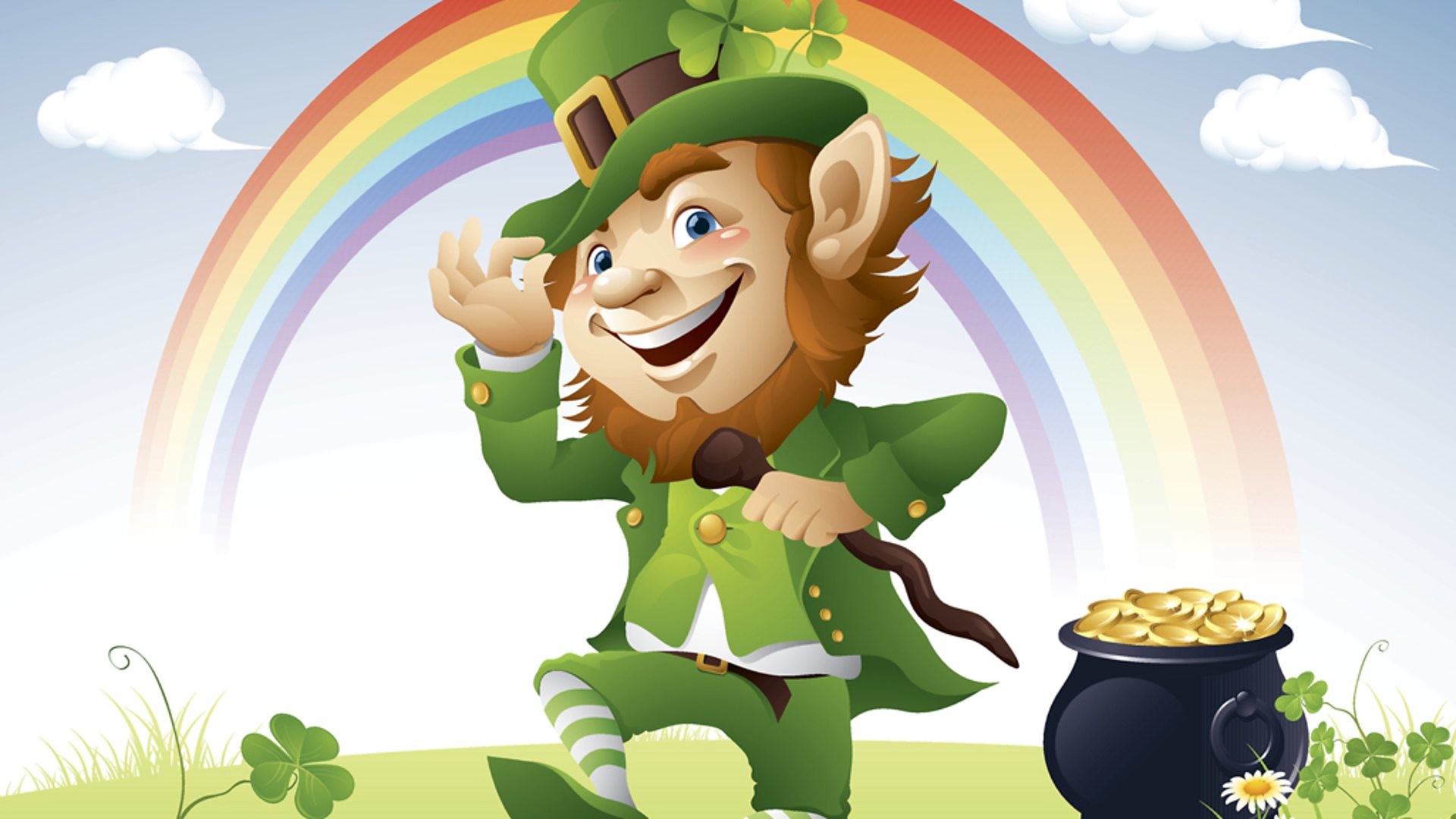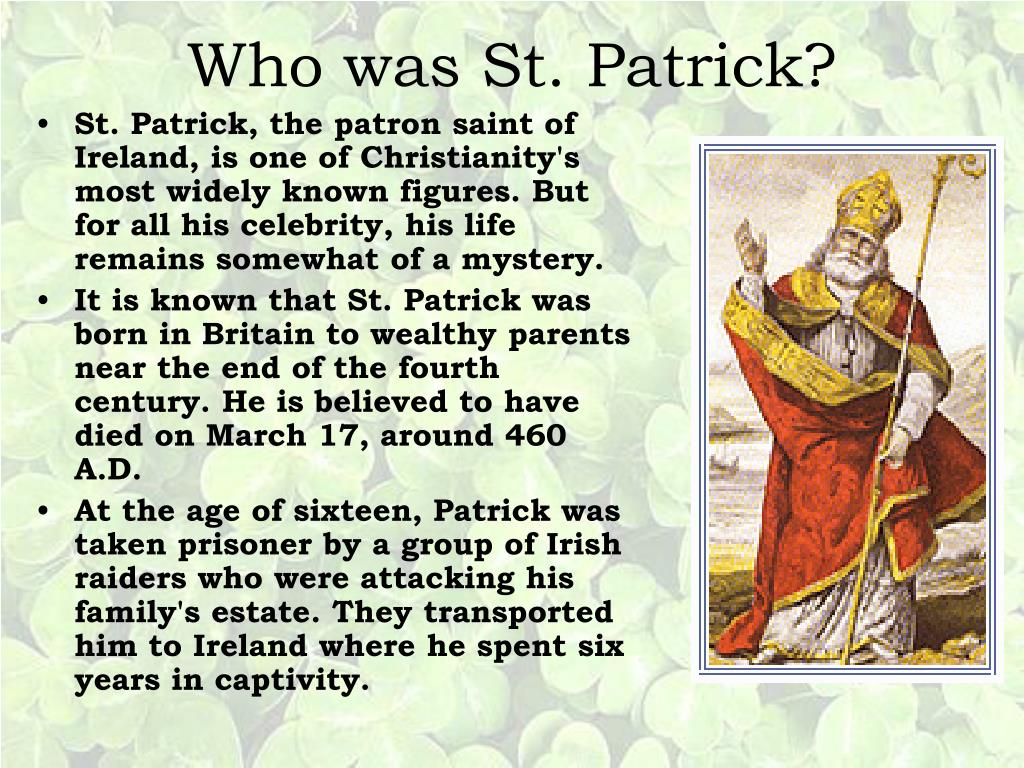Gallery
Photos from events, contest for the best costume, videos from master classes.
 |  |
 |  |
 |  |
 |  |
 | |
 |  |
Perhaps the most prominent example is Lucky the Leprechaun, who debuted on March 17, 1964 (St. Patrick’s Day) as the mascot of Lucky Charms cereal. “‘Tis luck to catch a leprechaun!” an Discover the fascinating origins and legends of leprechauns, the mischievous Irish creatures synonymous with St. Patrick's Day and a pot of gold. Uncover the secrets behind their distinctive appearance and their mystical, magical nature. Join us on this enchanting journey into the captivating world of leprechauns. This day that belongs to St. Patrick has become about leprechauns, shamrocks, pots of gold, and green—green everywhere. Famously, the City of Chicago dumps forty pounds of its top-secret dye into the river. A green racing stripe courses through the city. But long before there was the St. Patrick of myth, there was the Patrick of history. These books go beyond the leprechaun myths to teach about St. Patrick’s life, the significance of symbols like the shamrock, and how the holiday is celebrated The majority of St. Patrick’s Day customs, myths and fables have been perpetuated and instituted over a period of 16 centuries. Stripping away the widespread secular activities, we discover a holy person — a saint — who spent more than 30 years successfully proclaiming the Gospel message, the gift of faith to the people of Ireland. Significance to St. Patrick's Day. Leprechauns have become synonymous with St. Patrick's Day, a celebration of Irish culture and heritage that takes place annually on March 17th. This day commemorates St. Patrick, the patron saint of Ireland, known for spreading Christianity throughout the country. Although leprechauns have long been part of Irish folklore, they only became a prominent symbol of St. Patrick’s Day much later. Traditionally, St. Patrick’s Day was a religious holiday in Ireland, but as Irish immigrants introduced their traditions to America, it transformed into a broader celebration of Irish heritage. Separate man from myth, fact from folklore, in this small but mighty pocket guide dedicated to uncovering lesser-known facts about Ireland’s most beloved patron saint. Armed with answers to these 20 tantalizing questions, you’ll be the smartest reveler in the room at your next Saint Patrick’s Day party. Learn more Every year on March 17, the world comes alive with the vibrant colors of green, as people celebrate St. Patrick's Day. This magical holiday is not just about wearing shamrocks or indulging in Irish food - it’s steeped in myths and legends that make it enchanting. One such myth involves leprechauns, the whimsical little creatures believed to guard pots of gold at the end of rainbows. In this As St. Patrick’s Day approaches, images of leprechauns, shamrocks, and, of course, rainbows leading to pots of gold flood our imaginations. But while the legend of treasure waiting at the end of Have you ever wondered where leprechauns come from and why they are part of St. Patrick’s Day? 🍀 In this fun and educational video for kids, discover the l St Patrick's Day Picture Sudoku #1. St. Patrick's Day Picture Sudoku is a fun and easy activity for kids! Filled with fun, St. Paddy's Day-themed images such as four-leaf clovers, rainbows, and pots of gold, kids will be entertained while honing their deduction skills to solve the puzzles. THE MYTH: Leprechauns are inexorably linked with St. Patrick’s Day THE REALITY: While the little green, red-bearded troublemakers are an important part of Irish folklore in general, they have literally nothing to do with the historical St. Patrick’s Day. Saint Patrick’s Day And Leprechauns . Leprechauns are associated with Saint Patrick’s Day because they both trace their history to Ireland. Saint Patrick’s Day is celebrated on March 17th to commemorate the day Saint Patrick, the patron saint of Ireland, died. There is no direct connection between Saint Patrick’s and leprechaun apart The leprechauns, being solitary creatures, are tasked with protecting these pots of gold, hidden at the end of rainbows. Significance to St. Patrick’s Day. Leprechauns have become synonymous with St. Patrick’s Day, a celebration of Irish culture and heritage that takes place annually on March 17th. This day commemorates St. Patrick, the The majority of St. Patrick’s Day customs, myths and fables have been perpetuated and instituted over a period of 16 centuries. Stripping away the widespread secular activities, we discover a holy person — a saint — who spent more than 30 years successfully proclaiming the Gospel message, the gift of faith to the people of Ireland. The modern-day depiction of a St Patricks day Leprechaun is often described as a bearded, little old man about three feet tall, dressed in green, with shiny buckled shoes, a hat and maybe smoking a pipe. However, early Irish folklore surprisingly describes Leprechauns as men who wore red outfits and tri-cornered hats. 7. What mythological being is a part of St. Patrick's Day lore and Irish culture? Answer: Leprechauns . 8. Where was the first St. Patrick's Day parade in Ireland held in 1903? Answer: Waterford St. Patrick’s Day is all about shamrocks, leprechauns and wearing green, right? Well not exactly! While the holiday is filled with fun traditions, not everything you’ve heard about St. Patrick’s Day is actually true. Let’s bust some of the biggest myths surrounding this Irish celebration! From magical leprechauns to St. Patrick’s snake-banishing powers, some of the biggest “Irish facts” are actually just myths. So, before you go repeating these at the pub on St. Patrick’s Day, let’s set the record straight! Here are five common Irish myths that are completely false but still great craic!
Articles and news, personal stories, interviews with experts.
Photos from events, contest for the best costume, videos from master classes.
 |  |
 |  |
 |  |
 |  |
 | |
 |  |